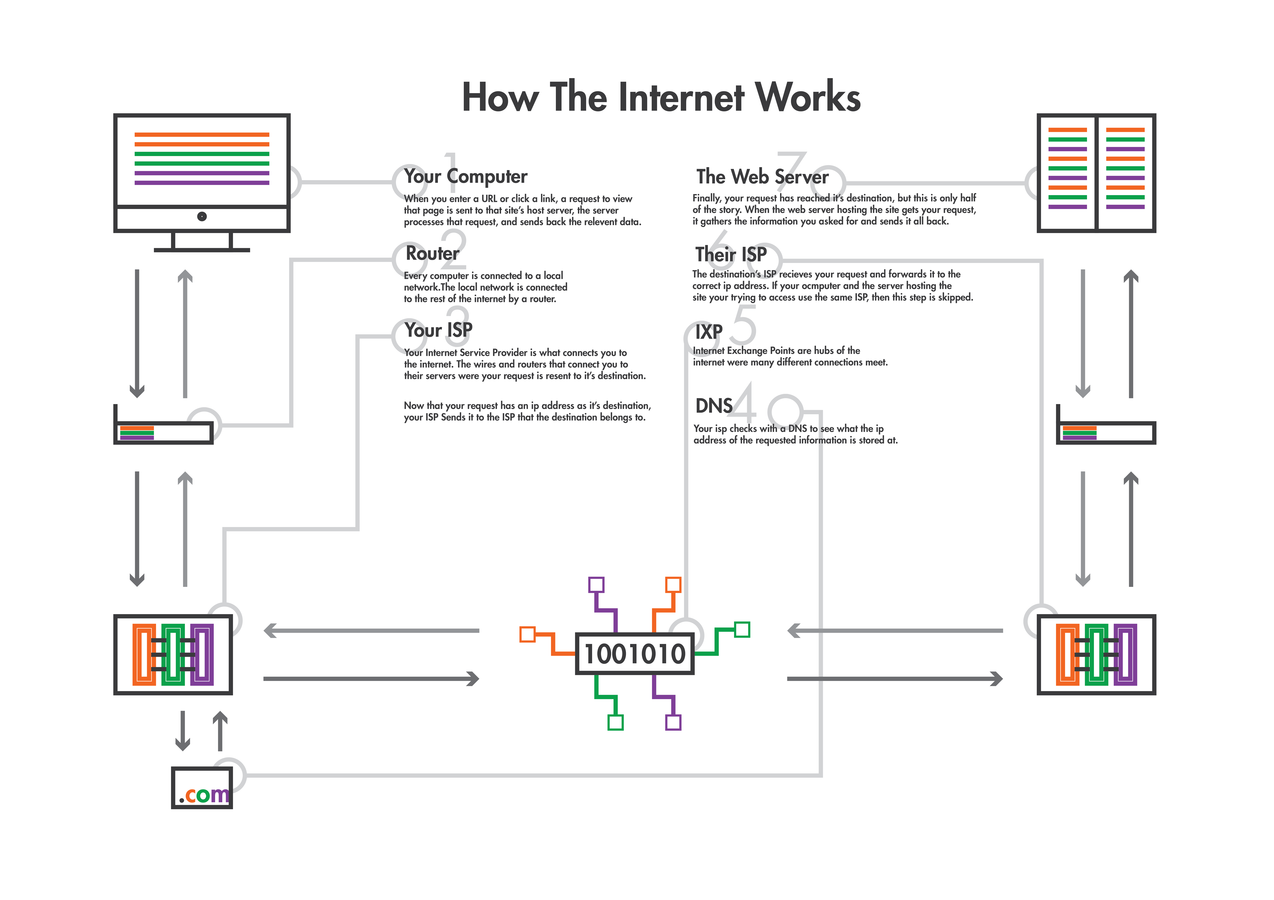DH 102 // how the web works
Prof. Mackenzie Brooks
September 11, 2018 // Day 2
administrivia
- Rewriting the Code
- attendance policy
- Roopika Risam 9/20
readings
- 2-3 main points of the article
- 1 thing you didn't quite understand
- 1 question for the rest of the class to answer
////
- Digital_Humanities, pages 3-16
- Digital_Humanities, pages 16-26
- "The Limits of the Digital Humanities"
- "Defining Data for Humanists"
D_H, pp. 1-16
- "humanities" as traditionally text-based disciplines
- "generative humanities" - we're making things now
- digitization of print cultural record > changes learning
- digital environment brings new conventions, need for standards, and a focus on design
- DH not a replacement for "traditional knowledge skills and methods"
- interfaces are important, but they can change, even with the same data
D_H, pp. 16-26
- computation depends on disambiguation at every level
- core activities: curation, analysis, modeling, editing
- humanistic values affect digital environments/structures
- versioning, prototyping, and FAILURE
- value of humanities?
D_H, projects
"Limits"
- DH suffers from an identity crisis
- DH is overstating the effect the "digital"
- DH makes assumptions and observations that aren't grounded in facts
- DH seeks to make traditional humanities obsolete
- DH tools are only good for "understanding things in mass," they still require a knowledgeable scholar to ask the right questions
- DH should resist and critique the digital
"Defining Data"
- Data is an artifact
- Data can be interpreted as texts
- Data can be computed/processed
- Data is not evidence on its own, but can be used as evidence
- Humanists can use their own skill-set and apply it to data
 Credit: now defunct http://www.justinrominedesign.com/
Credit: now defunct http://www.justinrominedesign.com/
proof!
On a Mac:
* Type cmd + space to open Spotlight search
* Type "terminal" and hit enter
* Type "traceroute www.yourdomain.com"
* Type Control + C to cancelOn Windows:
* Search for "cmd.exe" program and open it.
* Type "tracert www.yourdomain.com"
* Type Control + C to cancelmore proof!
glossary
- URL = Uniform Resource Locator
- TLD = top level domain
- DNS = Domain Name System
- HTTP = Hypertext Transfer Protocol
- FTP = File Transfer Protocol
- IP = Internet Protocol
- TCP = Transmission Control Protocol
HyperText Markup Language
<!DOCTYPE html>
<html>
<head>
<title>Page Title</title>
</head>
<body>
<h1>My First Heading</h1>
<p>My first paragraph.</p>
</body>
</html> Cascading Style Sheets
body {
background-color: #d0e4fe;
}
h1 {
color: orange;
text-align: center;
}
p {
font-family: "Times New Roman";
font-size: 20px;
}Activities
Complete activities 3-5 in Unit 0.
For Thursday
- readings
- look over Programming Historian lessons
- finish up activities 3-5

